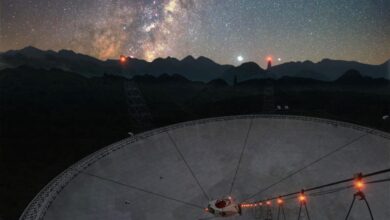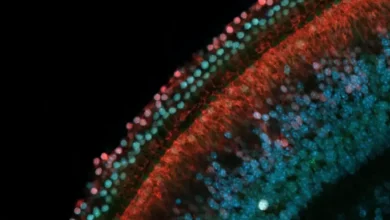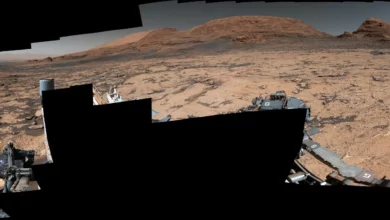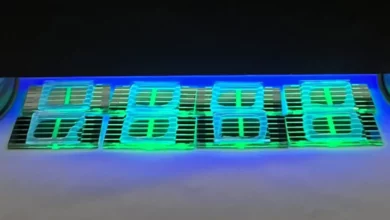Latest Articles
-
Sep- 2023 -1 SeptemberAstronomy

Mysterious Galactic Signals: Magnetar Observations Shed New Light on Fast Radio Bursts
Lead Image: The Chinese Five-hundred-meter Aperture Spherical radio Telescope (FAST). Credit: Bojun Wang, Jinchen Jiang & Qisheng Cui An international team reports on a radio pulsar phase of a Galactic magnetar that emitted a fast radio burst in 2020; observations suggest unique origins for “bursts” and “pulses,” which adds to FRB formation theory. More than 15 years after the discovery of fast radio bursts (FRBs) – millisecond-long, deep-space cosmic explosions of electromagnetic radiation – astronomers worldwide have been combing the universe to uncover clues about how and why they form. Nearly all FRBs identified have originated in deep space outside…
Read More » -
Aug- 2023 -30 AugustHealth

Decoding Deafness: USC Scientists Tune Into Hearing Regeneration
Lead Image: Rows of sensory hearing cells (green) next to supporting cells (red) in the inner ear of a mouse. Credit: John Duc Nguyen and Juan Llamas/Segil Lab An adult who becomes deaf cannot regain their hearing since the inner ear’s sensory cells, once damaged, don’t regenerate. In recent research, with partial funding from the National Institutes of Health and published in the Proceedings of the National Academy of the Sciences (PNAS), USC Stem Cell researchers delve into the reasons behind this and explore potential solutions. “In the non-sensory supporting cells of the inner ear, key genes required for conversion…
Read More » -
27 AugustNASA

Tectonic Trouble: NASA Measures Sinking Land in American Samoa
Lead Image: Landsat image of American Samoa’s Tutuila Island, acquired on July 22, 2022, with the Operational Land Imager (OLI) on Landsat 8. Credit: NASA Earth Observatory/Lauren Dauphin An 8.1-magnitude earthquake in 2009 worsened land subsidence in American Samoa. NASA scientists introduced InSAR technology, revealing increased subsidence rates post-earthquake. This research underscores the need for accurate data in global coastal resilience planning. On September 29, 2009, an 8.1-magnitude earthquake struck near American Samoa, Samoa, and Tonga, triggering a tsunami that caused human casualties and $200 million in property damage on the islands. The earthquake also exacerbated another problem in American…
Read More » -
26 AugustNASA

NASA Surprised by Cracks in Ancient Martian Mud Discovered by Mars Curiosity Rover
Lead Image: This panorama captured by NASA’s Curiosity Mars rover shows a location nicknamed “Pontours” where scientists spotted preserved, ancient mud cracks believed to have formed during long cycles of wet and dry conditions over many years. Such cycles are thought to support conditions in which life could form. Credit: NASA/JPL-Caltech/MSSS/IRAP New research suggests the same conditions that created the cracks could have been favorable to the emergence of microscopic life. Scientists aren’t entirely sure how life began on Earth, but one prevailing theory posits that persistent cycles of wet and dry conditions on land helped assemble the complex chemical…
Read More » -
25 AugustEnergy

Brighter and More Efficient Next-Gen LEDs: Stanford Breakthrough Comes at a Cost
Lead Image: Eight green perovskite LED substrates in Congreve’s lab glow as researchers shine ultraviolet light on them. Credit: Sebastian Fernández / Stanford University A Molecular Additive Enhances Next-Gen LEDs – But Shortens Their Lifespans By tinkering with the material makeup of perovskite LEDs, a cheaper and more easily made type of LED, Stanford researchers achieved leaps in brightness and efficiency – but saw their lights give out after a few minutes of use. Chances are, the screen you’re reading from glows thanks to light-emitting diodes – commonly known as LEDs. This widespread technology provides energy-efficient indoor lighting and increasingly…
Read More »










